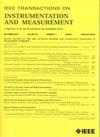Human-Guided Zero-Shot Surface Defect Semantic Segmentation
IF 5.6
2区 工程技术
Q1 ENGINEERING, ELECTRICAL & ELECTRONIC
IEEE Transactions on Instrumentation and Measurement
Pub Date : 2025-02-11
DOI:10.1109/TIM.2025.3538058
引用次数: 0
Abstract
Existing surface defect semantic segmentation methods are limited by costly annotated data and are unable to cope with new or rare defect types. Zero-shot learning offers a new possibility for addressing this issue by reducing reliance on extensive annotated data. However, methods that solely rely on image information waste the valuable experience that humans have accumulated in the field of defect detection. In this work, we propose a human-guided segmentation network (HGNet) based on CLIP, introducing human guidance to address the data scarcity and effectively leverage expert knowledge, leading to more accurate and reliable surface defect segmentation. HGNet, guided by the human-provided text, consists of two novel modules: 1) attention-based multilevel feature fusion (AMFF) which effectively integrates multilevel features using attention mechanisms to enhance the fine-grained information capture and 2) multimodal feature adaptive balancing (MFAB) which aligns and balances multimodal features through dynamic adjustment and optimization. Moreover, we extend HGNet to HGNet+ by incorporating interactive learning to correct segmentation errors with human-provided points. Our proposed method can generalize to unseen classes without additional training samples for retraining, meeting the practical needs of industrial defect detection. Extensive experiments on Defect-求助全文
约1分钟内获得全文
求助全文
来源期刊

IEEE Transactions on Instrumentation and Measurement
工程技术-工程:电子与电气
CiteScore
9.00
自引率
23.20%
发文量
1294
审稿时长
3.9 months
期刊介绍:
Papers are sought that address innovative solutions to the development and use of electrical and electronic instruments and equipment to measure, monitor and/or record physical phenomena for the purpose of advancing measurement science, methods, functionality and applications. The scope of these papers may encompass: (1) theory, methodology, and practice of measurement; (2) design, development and evaluation of instrumentation and measurement systems and components used in generating, acquiring, conditioning and processing signals; (3) analysis, representation, display, and preservation of the information obtained from a set of measurements; and (4) scientific and technical support to establishment and maintenance of technical standards in the field of Instrumentation and Measurement.
 求助内容:
求助内容: 应助结果提醒方式:
应助结果提醒方式:


